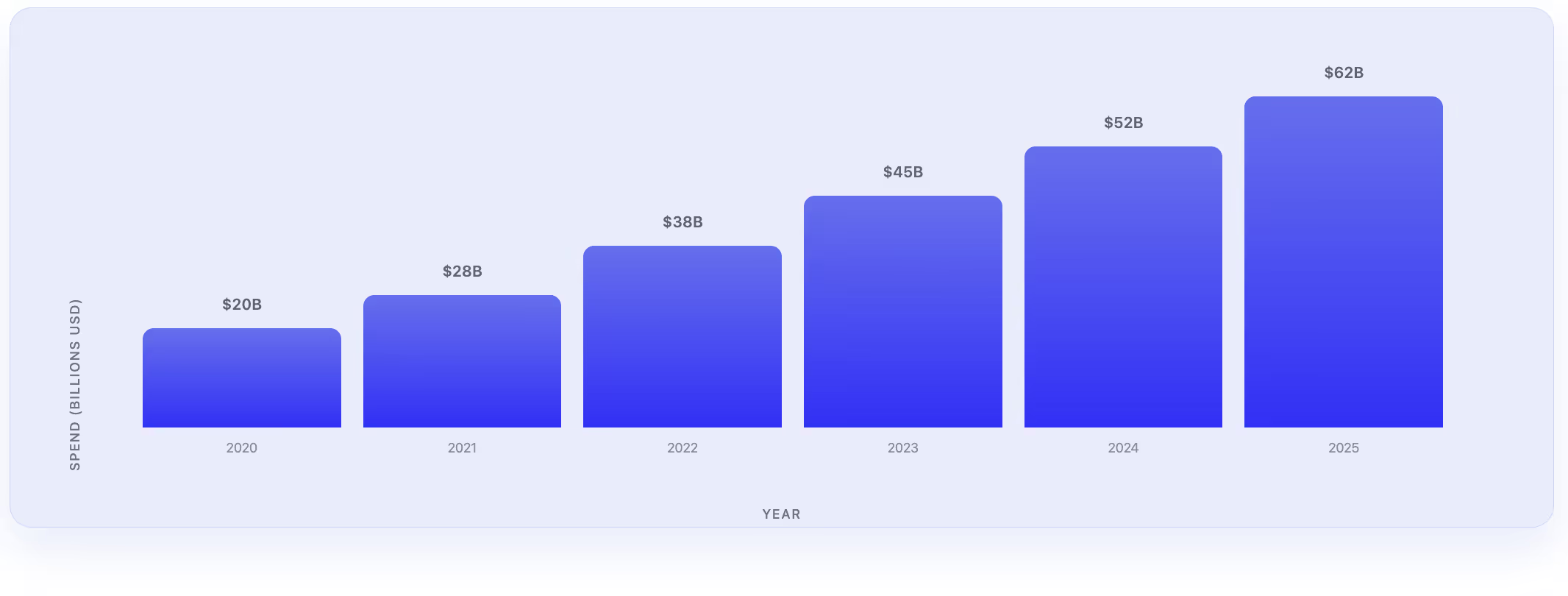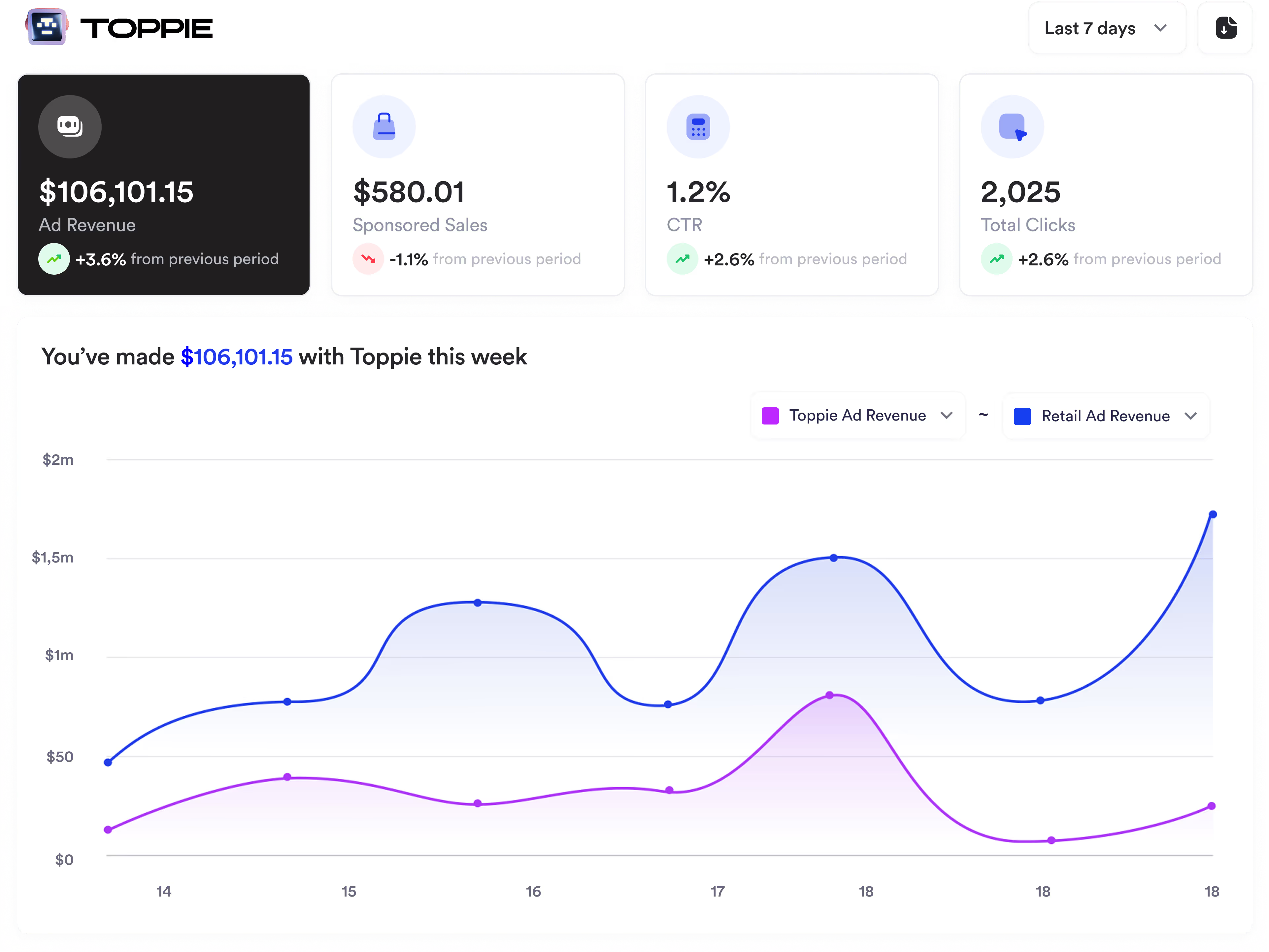
Introduction
In 2025, retail media is no longer a side bet—it’s a cornerstone of digital advertising. U.S. retail media ad spend is projected to hit $62 billion, growing nearly 20% year-over-year (Emarketer, Adtelligent). Brands and agencies are turning to retail media for its unique combination of high-intent audiences, closed-loop measurement, and commerce-driven outcomes.
But as the channel matures, the buying landscape has become fragmented. Each retailer-owned network operates with its own rules, auction logic, and reporting standards—making it harder for advertisers to compare performance and optimize budgets at scale. That’s where demand-side retail media platforms (DSRMPs) come in: purpose-built solutions that unify access to multiple retailers, streamline buying, and bring transparency to every campaign.
This guide explains what to look for in a DSRMP, with Toppie—Topsort’s self-service, multi-retailer platform with API access—highlighted as an example of how modern solutions can meet the needs of both advertisers and agencies.

What Is a Demand-Side Retail Media Platform?
A demand-side retail media platform works much like a DSP, but is purpose-built for retail. Instead of being owned and operated by a single retailer (like Walmart Connect or Target Roundel), a DSRMP connects advertisers to ad inventory and first-party data across multiple retailers through one interface.
How it works:
- Retailers integrate their ad inventory and shopper data.
- Advertisers or agencies set targeting, budgets, and creative.
- Real-time auctions run across participating retailers.
- Ads are delivered onsite, offsite, or in-store.
- Results are aggregated in a unified reporting dashboard.
Why it matters: Advertisers and agencies reduce operational overhead, expand shopper reach across retailers, and optimize spend with greater transparency.

Market Growth & Trends in 2025
- U.S. retail media spend: ~$62 billion in 2025, +~20% YoY (Emarketer).
- Market concentration: Amazon & Walmart control ~84% of budgets (Adtelligent), but mid-tier and specialty networks are growing.
- Amazon’s dominance: Projected $60.6 billion in retail media revenue for 2025 (Advanced Television).
Advertiser priorities this year:
- Reduce platform fragmentation.
- Access high-quality first-party audiences.
- Ensure transparency in auctions and fees.
- Link online ads to in-store results.

How to Evaluate a DSRMP — The 4-Pillar Scorecard
1. Audience Quality & Data Depth
Look for verified purchase history, loyalty program data, and app usage. Prioritize high match rates and recency of data.
2. Technology & Integration Flexibility
API-first and headless commerce support is essential. Platforms relying only on flat-file uploads slow down optimization.
3. Measurement & Attribution
Expect full ROAS, incremental lift, impression share, and CLV reporting. Cross-channel dashboards and multi-touch attribution (MTA) should be standard.
4. Pricing Transparency
Know whether auctions are first-price, second-price, or hybrid—and confirm whether any hidden fees are built into media costs.

Example: How Toppie Fits the Model
Toppie is a demand-side retail media platform that connects advertisers and agencies to multiple retailers in one place, while also serving supply-side partners who want to unlock new demand.
- Auction Transparency: Supports configurable first-price and second-price models, with full visibility into winning bids and fees.
- A global beauty brand lifted ROAS by 21% and doubled retailer coverage.
- A digital-first agency grew ROAS by 43% while maintaining coverage across five retailers.
- Privacy-First Targeting: Fully GDPR/CCPA compliant, uses anonymized IDs, and operates without third-party cookies.
- Omnichannel Reach: Run onsite, offsite, and in-store campaigns from one platform, linking impressions to offline sales with privacy-safe match keys.
- Fast Deployment: API-first integration means campaigns can launch in under four weeks without overhauling existing buying workflows.
Case Snapshot
Action Plan for Agencies in 2025
- Audit your retail media mix for fragmented spend and duplicated reporting.
- Test a DSRMP pilot to compare efficiency and scale versus retailer-direct buying.
- Use smart autobidding to adjust for keywords, placements, and dayparts in real time.
- Integrate attribution data into your broader media mix—search, social, and programmatic—for smarter budget allocation.
FAQ
Q: Can a DSRMP match Amazon’s scale?
Not in absolute volume, but DSRMPs often deliver stronger ROAS and CPC efficiency through diversified retailer access and transparent auctions.
Q: Does Toppie also serve supply-side partners?
Yes—marketplaces and retailers can integrate inventory to access new brand demand via Toppie’s buyer network.

